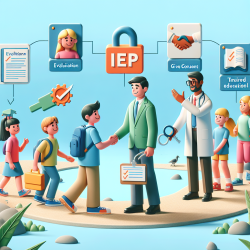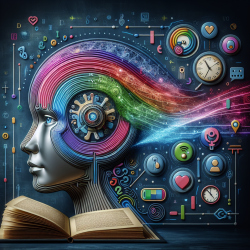Introduction
In the realm of speech therapy, understanding the intricacies of language recovery post-stroke is crucial. Recent research titled "Electrophysiological connectivity markers of preserved language functions in post-stroke aphasia" offers groundbreaking insights into the connectivity patterns that could enhance therapeutic approaches. This study employs resting-state magnetoencephalography (rsMEG) to explore the brain's connectivity in individuals with chronic aphasia, providing a new perspective on language recovery.
Understanding Electrophysiological Connectivity
The study focuses on amplitude envelope correlations (AEC), a metric used to describe the slower aspects of interregional communication in resting-state electrophysiological data. By examining the oscillatory frequency bands from theta to low-gamma (4–50 Hz), the research identifies the spatial topology of connections associated with preserved language abilities post-stroke.
Key Findings and Implications
The research reveals significant hypoconnectivity in the alpha (8–13 Hz) and beta (15–30 Hz) bands among stroke survivors with aphasia compared to healthy controls. This hypoconnectivity is particularly pronounced in the left hemisphere regions ipsilateral to the stroke lesion. The study also finds that greater connectivity in these bands correlates with better performance in language tasks, such as object naming and speech fluency.
Practical Applications for Practitioners
For speech therapists and practitioners, these findings highlight the importance of targeting specific frequency bands in therapeutic interventions. Here are some practical steps to consider:
- Focus on Alpha and Beta Bands: Tailor therapeutic exercises to enhance connectivity in these frequency bands, potentially using rhythmic brain stimulation techniques.
- Incorporate Resting-State Analysis: Utilize rsMEG or similar technologies to assess and monitor the connectivity patterns in patients, allowing for more personalized therapy plans.
- Collaborate with Neurologists: Work closely with neurologists to integrate findings from electrophysiological studies into comprehensive treatment strategies.
Encouraging Further Research
This study opens the door to numerous research opportunities. Practitioners are encouraged to explore the following areas:
- Longitudinal Studies: Investigate how connectivity patterns change over time with continuous therapy and recovery.
- Phase Synchronization: Examine phase synchronization differences in post-stroke aphasia and their relationship with language outcomes.
- Individualized Treatment Approaches: Develop personalized therapy plans based on individual connectivity profiles and monitor their effectiveness.
Conclusion
The insights from this study provide a new understanding of the electrophysiological connectivity profiles that underpin preserved language abilities in stroke survivors with aphasia. By integrating these findings into practice, speech therapists can enhance their therapeutic approaches, ultimately improving patient outcomes.
To read the original research paper, please follow this link: Electrophysiological connectivity markers of preserved language functions in post-stroke aphasia.










